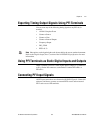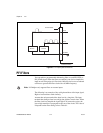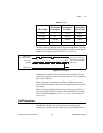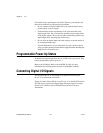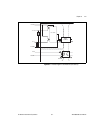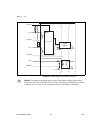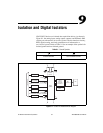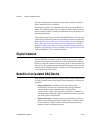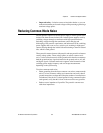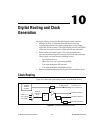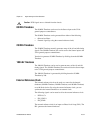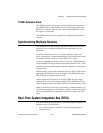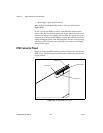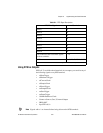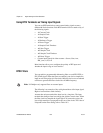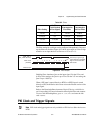
Chapter 9 Isolation and Digital Isolators
© National Instruments Corporation 9-3 NI 6238/6239 User Manual
• Improved safety—Isolation creates an insulation barrier so you can
make measurements at elevated voltages while protecting against large
transient voltage spikes.
Reducing Common-Mode Noise
Isolated products require an isolated power supply to deliver power to the
isolated side from the non-isolated side. Isolated power supplies work by
switching voltages through a transformer with high-speed transistors.
Switching voltages through the transformer causes charging and
discharging of the parasitic capacitances and inductances in the switching
power supplies that occur on every switch cycle, resulting in high-speed
currents flowing through the isolated side and returning to the non-isolated
side, which is earth ground.
These parasitic currents interact with parasitic and non-parasitic resistances
causing voltage spikes. These voltage spikes are called common-mode
noise, a noise source that travels in the ground and is therefore common to
both the ground and any signal referenced to the ground, such as AI, AO,
and digital signals. Common-mode noise appears at the harmonics of the
switching power supply frequency and can corrupt measurements
depending on the system setup.
To reduce common-mode noise:
• Better grounding from the front connector can reduce common-mode
noise. Use low resistance cabling and connections and verify that all
ground connections are kept short. Keep the number of connections to
a minimum. If the device’s isolated ground is being connected back to
earth ground, verify that this is done in the most direct way possible.
• Reduce source impedances if possible. The parasitic currents react
with these impedances.



